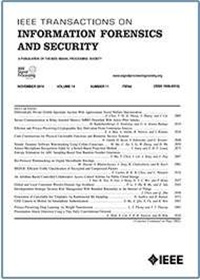Multi-Temporal Partitioned Graph Attention Networks for Financial Fraud Detection
IF 8
1区 计算机科学
Q1 COMPUTER SCIENCE, THEORY & METHODS
IEEE Transactions on Information Forensics and Security
Pub Date : 2025-09-08
DOI:10.1109/TIFS.2025.3607231
引用次数: 0
Abstract
The issue of transaction security has attracted widespread attention due to the frequent occurrence of financial fraud. Graph neural networks (GNNs) can effectively detect financial fraudulent behavior by capturing transaction relationships. However, many existing methods lack the consideration of modeling user behavior patterns at diverse timescales. Moreover, GNN-based approaches usually fail to adaptively perceive neighborhood information from global and local perspectives, resulting in some transaction node embeddings merging the information from partially irrelevant neighboring transaction nodes and leading to suboptimal performance. Therefore, this work proposes a Multi-Temporal Partitioned graph attention Network (MTPNet) for financial fraud detection. In particular, we design a multi-temporal partitioned graph construction algorithm that generates multi-temporal series graphs at various timescales. These graphs effectively express the periodic variations in users’ transaction behavior pattern, allowing GNNs to learn knowledge from these graphs and extract richer semantic information. Then, we propose a global-local neighborhood-aware encoder to enable transaction node embeddings to adaptively aggregate their most relevant neighborhood information based on the attention mechanism. We perform extensive experiments to evaluate the performance of MTPNet on large-scale financial fraud datasets and demonstrate its effectiveness.基于时序分割图关注网络的金融欺诈检测
由于金融欺诈事件的频繁发生,交易安全问题引起了人们的广泛关注。图神经网络(gnn)可以通过捕获交易关系来有效地检测金融欺诈行为。然而,许多现有方法缺乏对不同时间尺度下用户行为模式建模的考虑。此外,基于gnn的方法通常不能从全局和局部角度自适应地感知邻域信息,导致一些事务节点嵌入合并了来自部分不相关的相邻事务节点的信息,从而导致性能不佳。因此,本文提出了一种用于金融欺诈检测的多时相分割图关注网络(MTPNet)。特别地,我们设计了一个多时相分割图构建算法,可以在不同的时间尺度上生成多时相序列图。这些图有效地表达了用户交易行为模式的周期性变化,允许gnn从这些图中学习知识并提取更丰富的语义信息。然后,我们提出了一种全局-局部邻域感知编码器,使事务节点嵌入能够基于注意机制自适应地聚合最相关的邻域信息。我们进行了大量的实验来评估MTPNet在大规模金融欺诈数据集上的性能,并证明了它的有效性。
本文章由计算机程序翻译,如有差异,请以英文原文为准。
求助全文
约1分钟内获得全文
求助全文
来源期刊

IEEE Transactions on Information Forensics and Security
工程技术-工程:电子与电气
CiteScore
14.40
自引率
7.40%
发文量
234
审稿时长
6.5 months
期刊介绍:
The IEEE Transactions on Information Forensics and Security covers the sciences, technologies, and applications relating to information forensics, information security, biometrics, surveillance and systems applications that incorporate these features
 求助内容:
求助内容: 应助结果提醒方式:
应助结果提醒方式:


